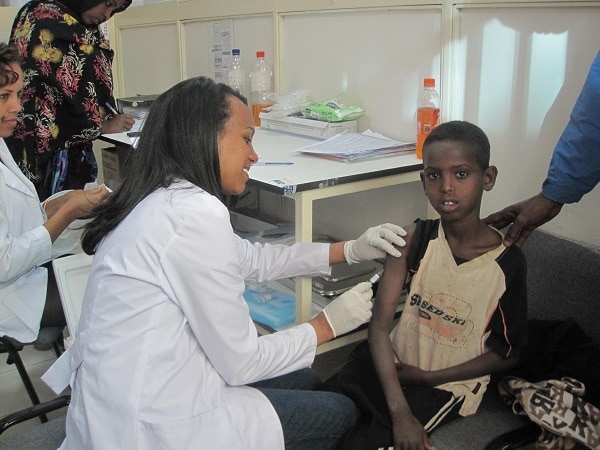One of the first things a “welcoming” community in America becomes aware of is the cost of refugee health care at a county health department.
We first became aware of how quickly “pockets of resistance” grow locally when a health department is overloaded with refugee vaccination needs and medical treatment costs for such diseases as TB and HIV/AIDS. Here is one of our earliest posts on the problem in Ft. Wayne, Indiana (2007!).
Now we see that the US State Department and the CDC are going to try to get a greater number of refugees vaccinated abroad before they enter the US. It sounds like a good move for medical reasons. But, it also provides a fig leaf by shifting the cost from one group of taxpayers to the other. While relieving the burden on local and state taxpayers, the costs will be borne by the federal taxpayers, so what is the difference!
Wyoming please note that if they are successful in vaccinating 56% abroad (we resettle on average 70,000 a year), that still leaves 30,800 or so refugees whose vaccination needs will be paid for by state and county taxpayers along with many other of their medical needs! Wyoming Governor Matt Mead thinks the refugee program is free to Wyoming and that the federal government has a money tree!

From the CDC:
The refugees have agreed to participate in a vaccination project that will introduce multiple vaccines overseas, depending on age, before they arrive to the US. The project is a partnership between CDC’s Division of Global Migration and the US Department of State’s Bureau of Population, Refugees, and Migration (PRM). CDC and PRM are co-funding this project for approved refugee applicants in the US Refugee Admissions Program (USRAP).The goal of the project is to provide cost-effective public health interventions, improve refugee health, and limit the number of vaccinations refugees will need after they arrive in the US. In addition to Kenya, the vaccination project is being implemented by IOM with USRAP in Ethiopia, Thailand, Malaysia, and Nepal.
[….]
This project has been implemented in five countries and will provide vaccinations overseas to 56 percent of US-bound refugees each year, saving state and local health departments from the cost and time to provide those vaccines after the refugees reach their new homes in the US.
And thereby eliminating an important driver of community resistance to refugee placement.
